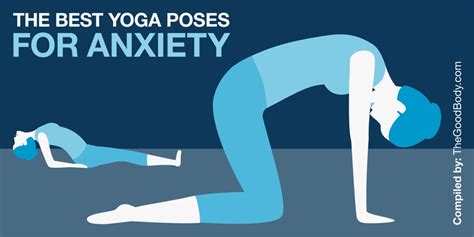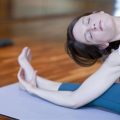Exploring Yoga Styles for Managing Anxiety and Depression: Techniques, Benefits, and Applications
Anxiety and depression are pervasive mental health challenges that can affect daily functioning and overall well-being. As mental health care evolves, alternative therapies like yoga have gained attention for their potential to alleviate symptoms. However, not all yoga styles offer the same benefits for mental health. In this article, we’ll explore various yoga styles and how they can be tailored to reduce anxiety and depression. Through this detailed analysis, we’ll examine key concepts, the historical context, practical applications, and future implications of using yoga for mental health improvement.
Key Concepts of Yoga for Anxiety and Depression
Yoga, a practice rooted in ancient India, encompasses various physical postures (asanas), breathing techniques (pranayama), meditation, and relaxation exercises. While yoga is typically associated with physical flexibility and strength, it also has significant mental health benefits, particularly in regulating stress, anxiety, and depressive symptoms. In this section, we introduce core concepts that explain how different styles of yoga can affect emotional regulation:
- Mind-body connection: How physical movement and breath awareness work to calm the nervous system.
- Neuroplasticity: How consistent yoga practice may create lasting changes in brain structure and function, improving mood and resilience to stress.
- Breathwork: The role of controlled breathing in triggering the parasympathetic nervous system to reduce anxiety.
- Mindfulness: The use of meditation and focused awareness during yoga to decrease rumination and anxious thoughts.
Historical Context of Yoga in Mental Health Therapy
Yoga’s origins date back over 5,000 years in ancient India, where it was developed as a spiritual discipline with mental and physical benefits. The practice has since evolved and spread across the globe. In the 20th century, Western medical researchers began exploring yoga as a therapeutic tool for stress-related conditions.
In the 1970s, studies on yoga’s impact on mental health gained momentum. For example, Herbert Benson’s research on the “relaxation response” showed that yoga could counter the physiological effects of the fight-or-flight response, reducing anxiety levels. Over the years, yoga has been integrated into cognitive behavioral therapy (CBT) models and other psychotherapeutic frameworks to treat anxiety and depression. Today, evidence-based practices such as Mindfulness-Based Stress Reduction (MBSR) and Mindfulness-Based Cognitive Therapy (MBCT) incorporate yoga principles.
Current State Analysis: Which Yoga Styles Are Best for Anxiety and Depression?
Not all yoga styles offer the same mental health benefits. Some practices are more vigorous, focusing on strength and flexibility, while others emphasize relaxation, mindfulness, and breath control. For individuals experiencing anxiety or depression, gentle and restorative practices tend to be more effective. Below, we analyze different yoga styles and their mental health benefits:
| Yoga Style | Key Features | How It Helps with Anxiety | How It Helps with Depression |
|---|---|---|---|
| Hatha Yoga | Slow-paced, basic postures, and breath control | Encourages mindfulness and relaxation | Promotes gentle movement and awareness, which can lift mood |
| Restorative Yoga | Long-held poses with props, deeply relaxing | Activates the parasympathetic nervous system, reducing stress | Encourages deep relaxation and emotional release |
| Yin Yoga | Deep, passive stretches held for extended periods | Relieves tension and cultivates mindfulness | Can help release deeply held emotional stress |
| Vinyasa Yoga | Fluid movement connected with breath | Focuses on breath to enhance mind-body connection | Releases endorphins through flowing movement |
| Kundalini Yoga | Breathwork, chanting, meditation, and specific postures | Increases energy and reduces anxiety through breath control | Heightens awareness and spiritual connection, reducing depressive symptoms |
Practical Applications: Yoga Techniques for Anxiety and Depression
Incorporating yoga into daily routines can be highly effective in managing symptoms of anxiety and depression. Below are some practical yoga-based strategies tailored for different mental health needs:
- For Anxiety:
- Practice Pranayama techniques such as Nadi Shodhana (alternate nostril breathing) and Ujjayi (victorious breath) to slow down heart rate and calm the nervous system.
- Include Restorative Yoga sessions to relax the body and mind, allowing for deep mental restoration.
- Engage in meditation or mindful breathing during Hatha or Yin Yoga to focus the mind away from racing thoughts.
- For Depression:
- Vinyasa Yoga can help increase energy levels and lift mood through rhythmic movement.
- Try incorporating Kundalini Yoga, which combines dynamic breathing and chanting to elevate emotional states.
- Use slow, gentle movements in Hatha or Restorative Yoga to promote feelings of comfort and emotional security.
Case Studies: Success Stories of Yoga for Mental Health
Real-world examples offer insight into how yoga can be successfully integrated into mental health care. Below are case studies that demonstrate the effectiveness of yoga for anxiety and depression:
| Case Study | Description | Outcome |
|---|---|---|
| Case Study 1: Corporate Stress Reduction | A tech company introduced weekly Kundalini Yoga sessions for employees experiencing high levels of stress and anxiety. | Participants reported lower stress levels and increased focus and well-being after 3 months. |
| Case Study 2: Depression in Adolescents | A school implemented a 12-week Vinyasa and Hatha Yoga program for teenagers struggling with mild to moderate depression. | Students showed improvement in mood, decreased absenteeism, and enhanced coping skills. |
| Case Study 3: Postpartum Depression Relief | A group of new mothers attended bi-weekly Restorative Yoga sessions to address symptoms of postpartum depression. | After 8 weeks, participants exhibited reduced depressive symptoms and increased self-confidence. |
Stakeholder Analysis
To fully integrate yoga as a mental health intervention, various stakeholders play a role:
- Mental Health Professionals: Psychologists and psychiatrists are essential in prescribing yoga as a complementary therapy.
- Yoga Instructors: Certified yoga instructors need training in mental health conditions to tailor sessions effectively.
- Employers: Organizations benefit from introducing yoga programs to reduce employee burnout and stress.
- Insurance Providers: Coverage for alternative treatments like yoga can increase accessibility for patients.
Implementation Guidelines
For yoga to be an effective therapy for anxiety and depression, a structured approach is essential. The following steps can help implement yoga-based programs in various settings:
- Assessment: Assess mental health needs to choose the appropriate yoga style.
- Instructor Selection: Hire certified yoga instructors with mental health training.
- Scheduling: Offer consistent sessions (2-3 times per week) to ensure lasting benefits.
- Follow-up: Track progress through assessments and adjust the program accordingly.
- Collaboration: Engage mental health professionals in the planning and monitoring stages.
Ethical Considerations
When using yoga as a therapy for anxiety and depression, ethical considerations include:
- Informed Consent: Patients should be fully informed about the benefits and limitations of yoga therapy








